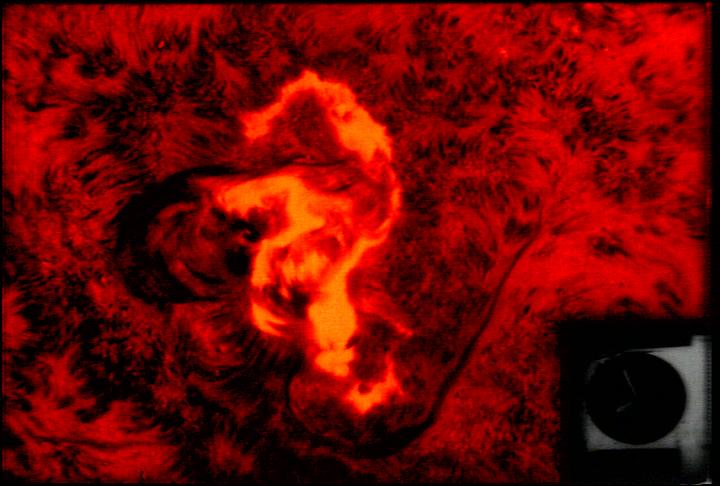I'm working my way through my own Apollo TL. An amazing place that lost to Hadley in the run up to Apollo 15 landing site was the Marius Hills. Only in 2009 did Kaguya discovered that there might be giant underground lava tubes there; good places to set a lunar base away from a very unfriendly surface - dust, radiations, temperature shifts...
So whatif Apollo had been aware of the existence of these lava tubes, made some limited exploration, and perhaps set a lunar base underground ?
What I've discovered checking the LPI picture datavase is that, in August 1967 Lunar Orbiter 5, frame 214 H-2, missed "Kaguya stunning discovery of 2009" - a huge skylight, the collapsed roof of a big lava tube beneath - by merely a mile.
So my POD is that Lunar Orbiter 5 is a little luckier and snaps a stunning picture of that pitch black, 200 feet wide gapping skylight. This turns Apollo and AAP on their heads at a crucial juncture.
By summer 1967 while AAP budget was properly massacred by Congress, the Apollo geologists had a huge meeting in Santa Cruz. Lunar Orbiter 5 flew the same month - now imagine how big a splash would a skylight high-res picture make, on the scientists, and on the congressmen...
Next step: in order to get even better pictures of the skylight, NASA tries to bring back the freshly cancelled Project UPWARD; the Lunar Mapping and Survey System (Archipeppe, you are certainly familiar with this one...) It was canned by Seamans late July 1967, just as Lunar Orbiter 5 launched to the Moon.
This adds some spysat and Cold War background to the whole story. Part sci-fi, part techno-thriller.

